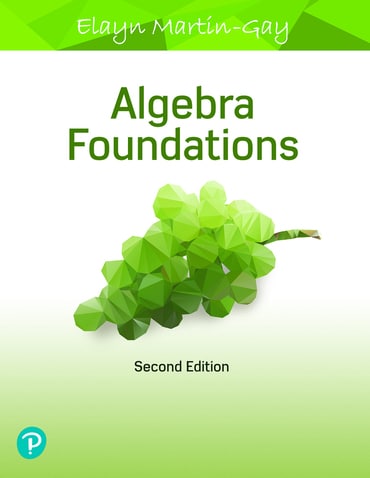Switch content of the page by the Role togglethe content would be changed according to the role

Algebra Foundations: Prealgebra, Introductory Algebra & Intermediate Algebra, 2nd edition
Published by Pearson (July 15, 2020) © 2020
- Elayn Martin-Gay University of New Orleans, Lakefront
Pearson+ subscription
per month
-month term,ISBN-13: 9780136881179
Algebra Foundations: Prealgebra, Introductory Algebra & Intermediate Algebra
Published 2020
Loose-Leaf
$186.66
Price Reduced From: $233.32
ISBN-13: 9780135239247
Algebra Foundations: Prealgebra, Introductory Algebra & Intermediate Algebra
Published 2019
Need help? Get in touch